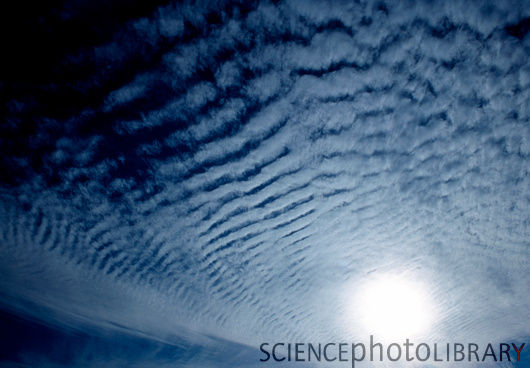It looks like you're using an Ad Blocker.
Please white-list or disable AboveTopSecret.com in your ad-blocking tool.
Thank you.
Some features of ATS will be disabled while you continue to use an ad-blocker.
share:
reply to post by Mianeye
I thought I made it clear that I AM NOT SAYING THESE ARE "CHEMTRAILS" That would be silly to assume that there is chemicals in them, how could I possibly know that? I can't know that, so I am not saying that is what is going on here. All I am saying is that when I see this repeatedly and, yes look up other sites which show the same things, I wonder. Just asking for possibilities with this post. I understand that contrails can last longer in the sky due to atmospheric conditions, it is just the patterns and the way the sky looks and the sun looks that make me go "hmmmmmmmmm"
I thought I made it clear that I AM NOT SAYING THESE ARE "CHEMTRAILS" That would be silly to assume that there is chemicals in them, how could I possibly know that? I can't know that, so I am not saying that is what is going on here. All I am saying is that when I see this repeatedly and, yes look up other sites which show the same things, I wonder. Just asking for possibilities with this post. I understand that contrails can last longer in the sky due to atmospheric conditions, it is just the patterns and the way the sky looks and the sun looks that make me go "hmmmmmmmmm"
reply to post by tracehd1
Well how about posting this video of all this Chemtrail spraying as you call it?
You do know that more than one plane flies in the sky at the same time.don't you?
Anyways... They were going balls to the wall what I filmed. There was as much as 3 planes in the same sky at the same time making X-patterns and grids.
Well how about posting this video of all this Chemtrail spraying as you call it?
You do know that more than one plane flies in the sky at the same time.don't you?
Originally posted by nitro67
reply to post by Mianeye
If this wasn't occurring like clockwork with the same effect occurring I would not think anything odd was up. I have noticed this occurring often.
You know why? Because planes are usually on a schedule, like buses. You will see those planes every morning doing the exact same thing, if they are not delayed and the jet stream pattern stays the same.
Grids and Xs happen when people need to get from Seattle to NY, but other people need to get from BC to Mexico, all at the same time. They have to pass each other sometimes.
Seriously. The majority of your pictures are cirrus clouds. Mother Earth is conspiring to bock the sun from you! Oh noes!
reply to post by nitro67
I know, it wasn't so much you i was going for, it's more the general people who suggest it.
Sorry for putting it in your thread, but you did post the picture and asked the questions, so i just answerd generally.
But for the pictures, those tells a lot.
Sorry for putting it in your thread, but you did post the picture and asked the questions, so i just answerd generally.
But for the pictures, those tells a lot.
edit on 23-4-2012 by Mianeye because: (no reason given)
edit on 23-4-2012 by
Mianeye because: (no reason given)
reply to post by nitro67
That's correct.
I believe we can safely call the trails in your photos artificial cirrus clouds. Manmade cirrus clouds are just one of the ways SRM is executed.
I thought I made it clear that I AM NOT SAYING THESE ARE "CHEMTRAILS" That would be silly to assume that there is chemicals in them, how could I possibly know that?
That's correct.
I believe we can safely call the trails in your photos artificial cirrus clouds. Manmade cirrus clouds are just one of the ways SRM is executed.
reply to post by 00nunya00
I am wondering what kind of atmospheric conditions need to be in place for contrails to stay visible for over an hour an disperse in a grid? Just found this from nearby Oregon:
I am wondering what kind of atmospheric conditions need to be in place for contrails to stay visible for over an hour an disperse in a grid? Just found this from nearby Oregon:
edit on 23-4-2012 by nitro67 because: (no reason given)
reply to post by nitro67
Here is some of the answers to that question.
en.wikipedia.org...
Here is some of the answers to that question.
en.wikipedia.org...
Contrails ( /ˈkɒntreɪlz/; short for "condensation trails") or vapour trails are long thin artificial clouds that sometimes form behind aircraft. Their formation is most often triggered by the water vapour in the exhaust of aircraft engines, but can also be triggered by the changes in air pressure in wingtip vortices or in the air over the entire wing surface.[1] Like all clouds, contrails are made of water, in the form of a suspension of billions of liquid droplets or ice crystals. Depending on the temperature and humidity at the altitude the contrail forms, they may be visible for only a few seconds or minutes, or may persist for hours and spread to be several miles wide
. Persistent contrails are thought to have a significant effect on global climate.[2]
edit on 23-4-2012 by Mianeye because: (no reason given)
edit on 23-4-2012 by Mianeye because: (no reason given)
The same thing occurs near were I live in Alberta, Canada.
If it looks like a clear sunny day starting by morning, the chemtrails.. I mean contrails start coming out and the entire sky turns into a hazy/cloudy day within hours. Without a cloud in sight coming in from the horizon. This type of thing didn't happen here until about five years ago.
If it looks like a clear sunny day starting by morning, the chemtrails.. I mean contrails start coming out and the entire sky turns into a hazy/cloudy day within hours. Without a cloud in sight coming in from the horizon. This type of thing didn't happen here until about five years ago.
reply to post by Mianeye
Interesting, thanks. So even contrails are dangerous and potentially altering the environment....
Interesting, thanks. So even contrails are dangerous and potentially altering the environment....
It is happening way more here lately.... The other day was such a beautiful day, then the "trails" started. I went into work and told them it was
going to be cloudy in about an hour, got looked at like I was nuts, then asked awhile later how I knew it was going to go from blue skies to cloudy in
that amount of time........ Go figure, I actually pay attention LOL
Yes, you are right about that, but so are allmost anything we do to make society run every day.
Originally posted by nitro67
reply to post by Mianeye
Interesting, thanks. So even contrails are dangerous and potentially altering the environment....
It's kind of silly, isn't it
reply to post by Mianeye
Worse than silly, just plain stupid.....I am posting this vid of one of my heroes, I know it is a bit off topic but we are talking about nature here so Viktor Schauberger deserves to be heard:
Worse than silly, just plain stupid.....I am posting this vid of one of my heroes, I know it is a bit off topic but we are talking about nature here so Viktor Schauberger deserves to be heard:
reply to post by nitro67
cimss.ssec.wisc.edu...
As for the video chaffe has nothing to do with contrails or the so called chemtrails. As far as the grid pattern goes that is planes flying in different directions and their contrails cross.Nothing nefarious happening there.
I am wondering what kind of atmospheric conditions need to be in place for contrails to stay visible for over an hour an disperse in a grid?
If you are attentive to contrail formation and duration, you will notice that they can rapidly dissipate or spread horizontally into an extensive thin cirrus layer. How long a contrail remains intact, depends on the humidity structure and winds of the upper troposphere. If the atmosphere is near saturation, the contrail may exist for sometime. On the other hand, if the atmosphere is dry then as the contrail mixes with the environment it dissipates. Contrails are a concern in climate studies as increased jet aircraft traffic may result in an increase in cloud cover.
cimss.ssec.wisc.edu...
As for the video chaffe has nothing to do with contrails or the so called chemtrails. As far as the grid pattern goes that is planes flying in different directions and their contrails cross.Nothing nefarious happening there.
reply to [url=http://www.abov
If water crystals are dangerous then watch out for those sneaky clouds in the sky. Pollution closer to the ground is much more to worry about than any contrail. Like automobile exhaust and industrial pollution is more harmful.
So even contrails are dangerous and potentially altering the environment....
If water crystals are dangerous then watch out for those sneaky clouds in the sky. Pollution closer to the ground is much more to worry about than any contrail. Like automobile exhaust and industrial pollution is more harmful.
reply to post by tsurfer2000h
When I mention the grid pattern I do not mean the crossing of separate trails. The grid pattern in within the trails themselves:

When I mention the grid pattern I do not mean the crossing of separate trails. The grid pattern in within the trails themselves:


edit on 23-4-2012 by nitro67 because: (no reason given)
reply to post by Afterthought
What would the point of solar radiation management be if it's not being carried out on a global scale?
The methods proposed using aircraft such as Stratospheric sulfur aerosols and Reflective aerosols are based around global events of the past like large comet strikes and volcanic eruptions where the dust clouds engulfed the entire planet.
What you think is going on is likened to draining a lake with a kitchen sponge.
What would the point of solar radiation management be if it's not being carried out on a global scale?
The methods proposed using aircraft such as Stratospheric sulfur aerosols and Reflective aerosols are based around global events of the past like large comet strikes and volcanic eruptions where the dust clouds engulfed the entire planet.
What you think is going on is likened to draining a lake with a kitchen sponge.
reply to post by tsurfer2000h
You know what....had you read the post in its entirety then your questions would have been answered...
Had you watched the video your question would have been answered...
Un- like you.... I read... I study... I find facts. I re- searched...
To open your mouth when ihe questions been asked and answered makes you a troll. Your not studying the facts, what people say or the proof they have. You want to jump from post to post inserting your foot to mouth...go right ahead...but I can't take you serious when the answers been provided.
You know what....had you read the post in its entirety then your questions would have been answered...
Had you watched the video your question would have been answered...
Un- like you.... I read... I study... I find facts. I re- searched...
To open your mouth when ihe questions been asked and answered makes you a troll. Your not studying the facts, what people say or the proof they have. You want to jump from post to post inserting your foot to mouth...go right ahead...but I can't take you serious when the answers been provided.
reply to post by nitro67
What you are seeing is probably what they call a mackerel sky...

Notice how it looks like a crossing pattern in the clouds when in fact it is just the way a mackerel sky cloud forms.
And here is what a mackerel sky is...
en.wikipedia.org...
Just a guess,but that is what your pics look like are happening.
When I mention the grid pattern I do not mean the crossing of separate trails. The grid pattern in within the trails themselves:
What you are seeing is probably what they call a mackerel sky...

Notice how it looks like a crossing pattern in the clouds when in fact it is just the way a mackerel sky cloud forms.
And here is what a mackerel sky is...
A mackerel sky or buttermilk sky is an indicator of moisture and instability at intermediate (altocumulus) or high (cirrocumulus) levels. The phrase 'mackerel sky' came from the fact that it looks similar to the markings of an adult king mackerel and this phrase is generally only used if a significant proportion of the sky is covered in altocumulus or cirrocumulus. This usually produces perspective effects as the clouds become smaller towards the horizon. Mackerel skies are spoken of in the popular bywords, "Mackerel in the sky, three days dry," "Mackerel sky, mackerel sky. Never long wet and never long dry," and the nautical weather rhyme, "Mare's tails and mackerel scales / Make tall ships carry low sails." In the winter they are often said to precede snowstorms and flurries. Mackerel skies have therefore become synonymous with bad weather approaching. However while altocumulus does rarely form instead of the more usual altostratus ahead of a frontal system, it is more likely that a so-called mackerel sky signifies the break up of an altostratus layer and leads to brighter conditions, and so the forecasting value of mackerel skies often depend on whether it was cloudy or clear prior to their appearance. However even if it was clear prior to their appearance, it does not always mean rain is approaching as altocumulus is often associated with a weak frontal system where the usual altostratus has become broken, and in this case there is a chance the weather may remain dry, although it is more likely that there will be light drizzle from stratus clouds.
en.wikipedia.org...
Just a guess,but that is what your pics look like are happening.
new topics
-
Letters to the Editor: Altadena, my neighborhood, has burned. Make fossil-fuel companies pay
Propaganda Mill: 2 hours ago -
The LEGACY of Outgoing President JOSEPH R. BIDEN Jr. - Forced From Office Eff 1.20.2025.
US Political Madness: 2 hours ago -
UK and Europe Floods
Rant: 4 hours ago -
FEMA kicks hurricane survivors out of temporary housing into snowstorm and freezing temperatures
Disaster Conspiracies: 4 hours ago -
Failures of leadership on display
US Political Madness: 4 hours ago -
Power grid faults surged right before Los Angeles wildfires began
Mainstream News: 4 hours ago -
Tustin California Military equipment stolen BIG equipment .
Social Issues and Civil Unrest: 5 hours ago -
PALES-TINE, PALES-ADES and the Australian Aboriginal "Lightning Man"
Dreams & Predictions: 5 hours ago
top topics
-
Tustin California Military equipment stolen BIG equipment .
Social Issues and Civil Unrest: 5 hours ago, 15 flags -
FEMA kicks hurricane survivors out of temporary housing into snowstorm and freezing temperatures
Disaster Conspiracies: 4 hours ago, 15 flags -
Letters to the Editor: Altadena, my neighborhood, has burned. Make fossil-fuel companies pay
Propaganda Mill: 2 hours ago, 12 flags -
Failures of leadership on display
US Political Madness: 4 hours ago, 11 flags -
How To Spot Fake U.F.O. Photos
Aliens and UFOs: 17 hours ago, 8 flags -
Power grid faults surged right before Los Angeles wildfires began
Mainstream News: 4 hours ago, 7 flags -
UK and Europe Floods
Rant: 4 hours ago, 6 flags -
PALES-TINE, PALES-ADES and the Australian Aboriginal "Lightning Man"
Dreams & Predictions: 5 hours ago, 5 flags -
The LEGACY of Outgoing President JOSEPH R. BIDEN Jr. - Forced From Office Eff 1.20.2025.
US Political Madness: 2 hours ago, 5 flags
active topics
-
Trump says ownership of Greenland 'is an absolute necessity'
Other Current Events • 208 • : SprocketUK -
Letters to the Editor: Altadena, my neighborhood, has burned. Make fossil-fuel companies pay
Propaganda Mill • 6 • : BeyondKnowledge3 -
Tustin California Military equipment stolen BIG equipment .
Social Issues and Civil Unrest • 15 • : Astrocometus -
Power grid faults surged right before Los Angeles wildfires began
Mainstream News • 11 • : fringeofthefringe -
The LEGACY of Outgoing President JOSEPH R. BIDEN Jr. - Forced From Office Eff 1.20.2025.
US Political Madness • 5 • : soulrevival -
Failures of leadership on display
US Political Madness • 11 • : Astrocometus -
New UK Petition - Close the borders! Suspend ALL immigration for 5 years!
Regional Politics • 25 • : angelchemuel -
The Truth about Migrant Crime in Britain.
Social Issues and Civil Unrest • 51 • : Oldcarpy2 -
To become president, Zelensky had to learn Ukrainian
Political Conspiracies • 54 • : Oldcarpy2 -
This should be plastered all over the airwaves
Mainstream News • 60 • : awhispersecho


